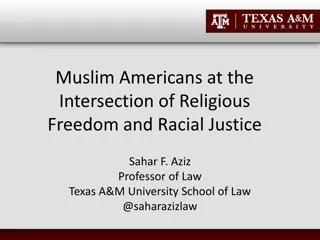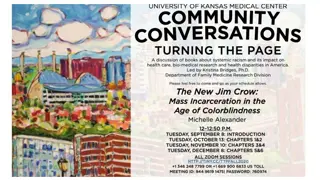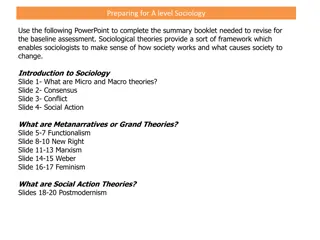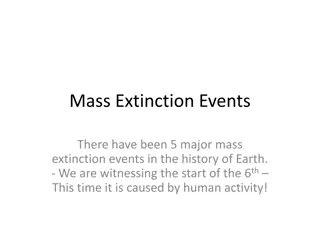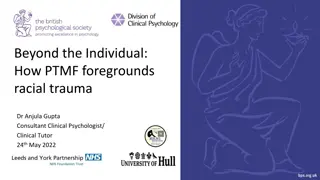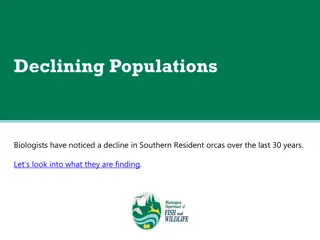
**Scientific Racism in 19th Century Oceania**
The late 19th century saw the rise of scientific racism in Oceania, with theories like Darwinism used to justify the decline and extinction of indigenous populations. This era witnessed debates on Maori and Native Australian extinction, assimilation policies, and paternalistic approaches to indigenous health. The narrative reflects a dark period where pseudoscientific ideologies perpetuated harmful stereotypes and informed colonial policies.
Download Presentation

Please find below an Image/Link to download the presentation.
The content on the website is provided AS IS for your information and personal use only. It may not be sold, licensed, or shared on other websites without obtaining consent from the author. If you encounter any issues during the download, it is possible that the publisher has removed the file from their server.
You are allowed to download the files provided on this website for personal or commercial use, subject to the condition that they are used lawfully. All files are the property of their respective owners.
The content on the website is provided AS IS for your information and personal use only. It may not be sold, licensed, or shared on other websites without obtaining consent from the author.
E N D
Presentation Transcript
The Doomed Race: A Scientific Axiom of the Late Nineteenth Century - Russel McGregor - The prejudices against the native Australian population were not new; the language of science just provided a supposedly objective rationale for anti-native sentiment. What was new was the explanatory framework the Natural Law of Survival of the Fittest replaced Divine Providence as its intellectual foundation. In a sense, this was little more than a dressing- up in the newly- fashionable language of evolutionary theory. Nonetheless, the fashionable dress did lend the respectability and certainty of science. - The author argues that Darwinism linked primitivity and extinction. This is because of the idea that backward races could not compete with progressive, evolved ones. Because native populations were declining anyway as a result of colonialism, scientists were able to cite this as proof that extinction was not only inevitable but already happening. The decline of the Tasmanians was often cited, and colonial policy reflected the belief that these races would disappear. - According to 19th and 20th century scientists, by studying the natives, they could see how people lived in the stone age because their race had not evolved past extreme primitivity. Often, their expertise in bushcraft and tracking was cited as evidence of their backwardness. - As well as being seen as primitive, the native Australians were seen as childlike. Some believed that they were intellectually inhibited because their cranial sutures supposedly closed earlier, giving them childlike minds and placing them on par with white children. Because of their perceived simplicity and naivety, native Australians were seen to be more prone to the vices of civilisation , like drugs and drink. - The numerical data used to prove native decline was lacking. Namely, there was a lot of discrepancy concerning who classified as a native. They would also simply ignore census data when it went against their hypotheses, and they often favoured qualitative observational accounts.
May the People Live: A History of Maori Health Development; 1900-1920 - Raeburn Lange - There was a lack of consensus among scientists surrounding M ori extinction. To some, M ori extinction was a product of Darwinian natural laws, and it would make New Zealand a better place. But the majority saw it as saddening, albeit inevitable. There was even debate surrounding whether they were actually going extinct. - Many believed that the only way for the M ori to survive was for them to become amalgamated with the Pakeha population. This meant the physical and cultural absorption of the M ori. According to some scientists, the M ori were a dignified race that would mesh well with the white population due to their common Aryan ancestors. However, others argued that mixed-marriages produced weak, sickly offspring that would weaken both races. - The colonial government believed they had to save the M ori from themselves. The approach was typically paternalistic and recommended benevolent tutelage by the Pakeha population. Health and hygiene were the key areas of focus. Even though many saw it as a fruitless quest, they still held out hope that it could at the very least slow down their decline. - The most significant M ori health programmes before 1900 were conducted by Native Schools. They provided healthcare and taught the principles of hygiene and neatness. The teachers were supposed to act as missionaries of civilisation. Even though they were technically only supposed to administer healthcare to pupils, they played a central role in community health in populated areas. - While the colonial government controlled M ori health and education, the native New Zealanders were not just passive recipients. There were protests in the 1860s by the M ori and missionaries about the infringement of M ori rights. And M ori parliamentarians fought against the misuse of funds allocated to healthcare in M ori communities. A late-nineteenth- century Pakeha public inclined to humanitarianism was comfortable with the idea that the need was to provide palliative care for a dying race
Progress through Racial Extermination: Social Darwinism, Eugenics, and Pacifism in Germany,1860- 1918 - Richard Weikart - Darwinism contributed to exterminationist racism by: propagating Malthusian ideas; inadvertently supporting the idea of different races being different species; arguing that individuals must compete for resources. It also undermined religious ideas surrounding the sanctity of life. - Weikart argues that German exterminationist racism predated the German colonisation of Africa. He disagrees with Hannah Arendt s argument that colonisation post-1884 was what made racism and eugenics popular. It would be highly foolish to wage war against these people. They disappear on their own when they come into contact with whites, for the bloodless war is always more effective than the bloody one - By the 1880s, two key ideas of Darwinist racism emerged. Ludwig Gumplowicz developed the idea of racial struggle which argued that interracial tension was the driving force of history. Friedrich Ratzel put forward the idea of Lebensraum and defined it as a struggle for space between races. Even though Ratzel was an egalitarianist, the idea was appropriated by eugenicists. - Eugenicists were not opposed to war itself. They only took issue with the fact it weakened the nation because the young, healthy and racially valuable men were being sent to the die, while the sickly survived. They did generally support the idea of conflict between a united Europe and non-whites, but they advocated for bloodless, peaceful colonisation instead. - Haekel, a staunch eugenicist, was a member of multiple pacifistic organisations and founded The Monist League. However, the author says that eugenics was not the main reason for Germans jumping ship during WW1. It was just one reason among others for Germans refusing to fight, and many eugenicists were indeed active warmongers.
Sadiah Qureshi Dying Americans: Race, Extinction and Conservation in the New World - by the 19th century there was a growing understanding that extinction was an integral feature of the natural world, seen by some to undermine the perfection of nature and attack the existence of a divine creator the growing acceptance of racial extinction as a natural phenomenon was used to explain the decline of indigenous populations in overseas colonies, supported by Charles Darwin who framed colonial encounters as a form of social/cultural natural selection where the more civilised group would naturally triumph over native barbarians the role of the environment in racial extinction was also acknowledged; Darwin argued that the decline of native populations would be slower in climates less favourable to settlers and Thomas Bendyshe argued that environmental changes could in fact stimulate the recovery of a population already in decline George Catlin set out to document the indigenous population of North America over the 1830s in response to fears that they would soon face extinction, before setting out across America and Europe in the 1840s to deliver lectures on the importance of preserving indigenous lives and cultures Catlin s work contributed to the creation of national parks as a means of preserving native populations, though over the course of the 19th century natives were increasingly driven from their ancestral lands in an effort to remove the human element and create entirely natural pure wilderness regions - the whole notion of wilderness seeks to erase human presence or historical usage. The birth of the park system helped to both create and promote a vision of wilderness that continues to remain powerful and which has complicated associations with the notion of dying races. - - -
John J. Cove What the Bones Say: Tasmanian Aborigines, Science and Domination - initial tensions between European colonists and Parlevar Aborigines arose from competition over land (Europeans claimed native lands for agriculture/pastoral purposes), food (shortages led to overhunting of local game that natives depended upon) and labour (colonists kidnapped native women and children) though the conflict was briefly eased when the Parlevar were brought under the protection of colonial law, the situation worsened as the colonial population grew, and settlers were advised to respond to increased Parlevar aggression by arming themselves and associating with militia groups though the public favoured more proactive and aggressive measures to outbreaks of native violence, such as the implementation of martial law in 1828, colonial authorities and Christian missionaries worked hard to pursue a more peaceful solution through relocation, conversion and civilisation Aboriginal reserves were frequently moved from location to location as they encountered disease, came into conflict with whalers and sealers, found themselves lacking shelter and a steady supply of game, all contributing to populations in decline the last Tasmanian Aborigine died in 1876 and so research into Tasmanian Aborigines over the 19th century depended on anatomical museums and emerging theories such as phrenology and philology, which utilised both Parlevar skulls and language to make assessments about their mental capacity - By 1850 there were nineteen anatomical museums in Britain alone. Tasmanian Aboriginal skeletal remains were found in most of them. - - -
Questions - Why were Europeans so keen to believe that the extinction of native populations was inevitable? - How significant were the efforts of European settlers to combat the extinction of native populations?



